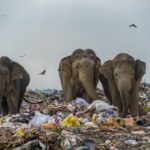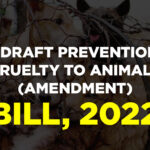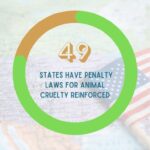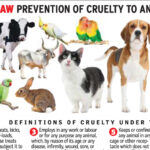Animal cruelty is often regarded as a debilitating scourge affecting the moral fabric of society. However, its implications transcend the immediate suffering of individual animals, rippling outward to impact entire ecosystems and the environment at large. The intricate web of life is disturbingly interconnected, where the cruelty inflicted upon one node can reverberate across various channels, leading to devastating ecological consequences. This examination delves into the multifaceted ways in which animal cruelty affects the environment, treating the subject with the gravity it warrants.
At its core, animal cruelty entails the infliction of physical pain, mental distress, or suffering on animals through neglect, abuse, and exploitation. Whether it manifests in the form of factory farming, illegal wildlife trade, or outright poaching, the brutality inflicted upon these sentient beings has profound repercussions. A significant yet often overlooked aspect of animal cruelty is its contribution to ecological degradation.
The most visible manifestation of animal cruelty is the waste generated by industrial animal farming. In a world where billions of animals are raised for food, the sheer volume of waste produced is staggering. Livestock farming produces a gargantuan amount of manure, which, when improperly managed, poses substantial risks to soil and water bodies. Nutrient run-off from animal waste seeps into rivers and lakes, contributing to nutrient pollution, algal blooms, and subsequent dead zones. Such environments become inhospitable not just for aquatic creatures but for entire communities that rely on clean water sources.
This waste issue is intricately interlinked with another dimension of animal cruelty—the deforestation that accompanies meat production. Large tracts of forest are consistently razed to create pastures for livestock. The Amazon rainforest, the lungs of our planet, faces extensive deterioration driven largely by agribusiness. As trees fall and ecosystems are obliterated, carbon dioxide—a significant greenhouse gas—is released into the atmosphere, exacerbating climate change. The implications are dire, as rising temperatures and shifting weather patterns threaten not only animal habitats but human livelihoods as well.
Additionally, the displacement of native species during this deforestation contributes to biodiversity loss. Animal cruelty, via habitat destruction, eradicates entire populations of flora and fauna that have evolved over millennia. The extinction of a single species can resonate throughout the ecosystem, leading to a cascading effect. For example, the decline of pollinator species due to habitat loss drastically affects plant reproduction, crippling food webs and compromising ecosystem stability. This is just one of many interactions illustrating how human actions, intertwined with cruelty, escalate into ecological crises.
Moreover, the illegal wildlife trade epitomizes a particularly egregious form of animal cruelty with far-reaching ecological implications. The illicit capture and sale of exotic animals disrupt entire ecosystems. When apex predators are removed from their habitats, the population dynamics of prey species spirals out of control, leading to overgrazing and further degradation of habitats. This phenomenon, known scientifically as a trophic cascade, underscores the delicate balance maintained within ecosystems, one that is regularly disturbed by human greed and cruelty.
Furthermore, many animals subjected to cruelty are kept in appalling conditions that deplete local resources. For instance, in circuses or entertainment venues, wild animals are often deprived of their natural habitats and social structures, leading to psychological distress and physical ailments. The overuse of water, land, and feed to maintain these captive animals contributes to local resource depletion. Such exploitation not only diminishes the quality of life for the animals but adversely affects surrounding ecosystems that function optimally under natural conditions.
Another vital discussion point concerns the relationship between animal cruelty and zoonotic diseases. The overcrowded and unsanitary conditions often found in factory farms serve as breeding grounds for pathogens. These diseases can jump from animals to humans, leading to potential pandemics. Increased susceptibility to disease disrupts not only public health but also environmental stability, as the ensuing healthcare crises can detract attention and resources from environmental conservation efforts.
Furthermore, the societal normalization of animal cruelty fosters a disregard for the environment. When society endorses the trivialization of animal suffering, it inadvertently cultivates a culture of insidious detachment toward nature itself. This disconnect dulls the collective conscience, inhibiting the urgency required to address environmental degradation. The prevailing apathy toward animal welfare may very well serve as a preamble to broader ecological irresponsibility, resulting in a vicious cycle of exploitation and destruction.
To surmount the dual dilemmas of animal cruelty and environmental degradation, a systemic change in societal attitudes is paramount. Raising awareness, championing humane practices, and advocating for ethical consumption are essential steps. Policies promoting sustainable agriculture and wildlife protection can substantially mitigate the environmental repercussions of animal cruelty. The integration of compassion and ethical considerations into policymaking will cultivate a foundational shift in how society relates to both animals and the natural world.
In conclusion, the effects of animal cruelty on the environment are multifaceted and insidious. From waste management to biodiversity loss and the spread of diseases, the ecological ramifications of our treatment of animals reverberate throughout the planet. The fight against animal cruelty is not merely a battle for the rights of animals; it is a fight for the health of our ecosystems and, ultimately, our survival. The interconnectedness of life necessitates a reevaluation of our relationship with the animal kingdom, whereby respect and empathy become paramount virtues guiding our environmental stewardship.








